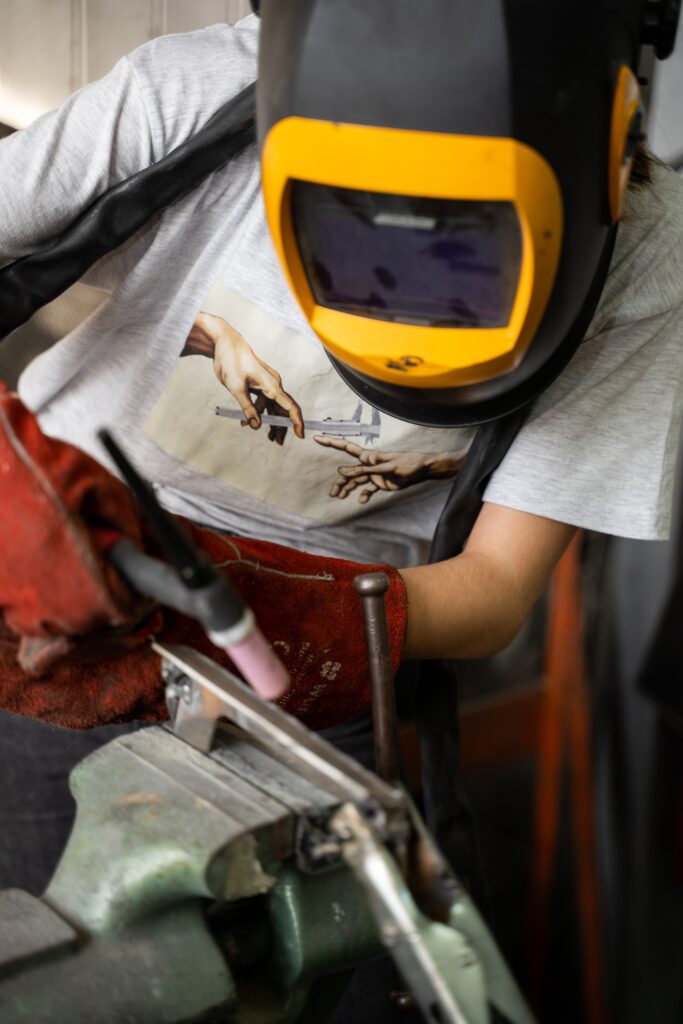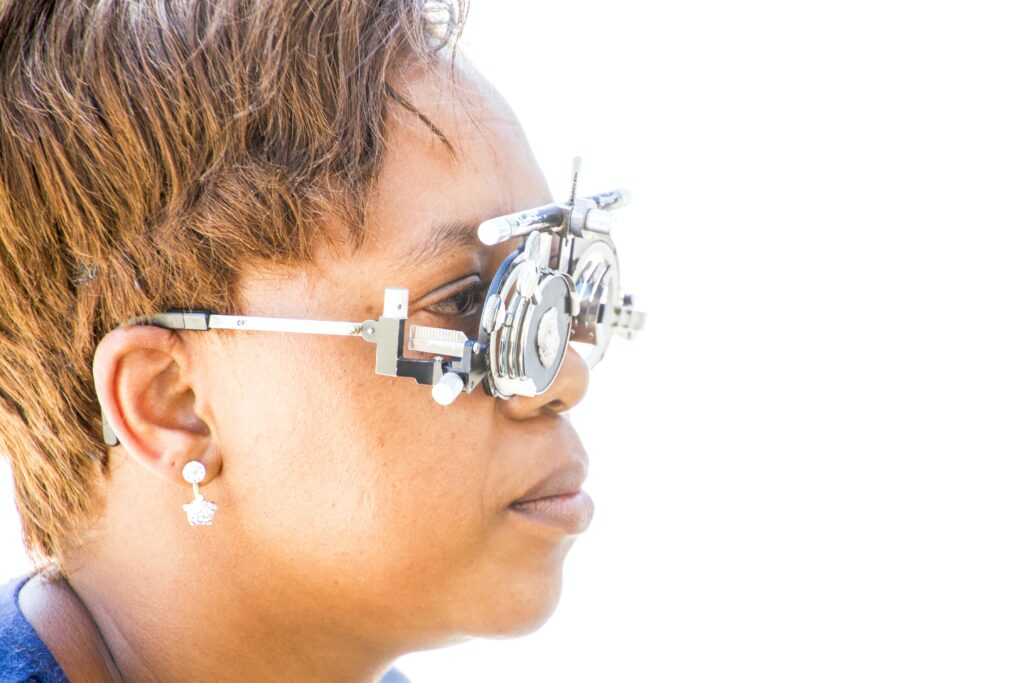If you’re fascinated by the world of welding and its intricate skills, you’ll find yourself completely absorbed by the contents of this article. It’s all about the complexity and demands of various welding tests and, more specifically, it seeks to discuss, which is the most challenging one to pass. From exploring the techniques required to revealing what makes certain tests harder than others, “What Is The Hardest Welding Test To Pass?” is set to fuel your curiosity. So, why wait? Jump right in and become enlightened with the insights this piece has to offer!

Understanding Welding Tests
Welding tests are critical steps designed to analyze the skill of a welder. They range from theory to practical examinations, but predominantly require the execution of physical welding tasks under strict conditions. To truly understand these tests, you need to be familiar with the unique types, their purpose, and key factors that can influence the results.
Different Types of Welding Tests
There exist several types of welding tests, each with distinct procedures and requirements. The common types include the 6G Pipe Welding Test, TIG (Tungsten Inert Gas) Welding Test, MIG (Metal Inert Gas) Welding Test, Underwater Welding Test, and AWS CWI (American Welding Society Certified Welding Inspector) Exam. Each test is designed to assess a welder’s proficiency in a different area, giving a comprehensive picture of their abilities.
Purpose and Significance of Welding Tests
Welding tests serve a purpose beyond mere pass or fail grades. They ensure welders have the competence to handle real-life welding tasks with precision, ensuring safety in various industries. The importance of these tests cannot be underestimated, seeing as they lay the foundation for operating in an environment where small errors can result in enormous consequences.
Key Factors Assessed in Welding Tests
Welding tests scrutinize various aspects of a welder’s craft. Key amongst them are the technical finesse and accuracy of the finished weld, the ability of the welder to follow safety procedures, and the strength and durability of the end product. Moreover, the welder’s theoretical knowledge of various welding procedures and how they are applied is also put to the test.
The 6G Pipe Welding Test
Renowned as one of the toughest tests, the 6G pipe welding test challenges even experienced welders. It requires a high level of technical skill and precision.
Overview and Procedure of 6G Pipe Welding Test
The 6G Pipe Welding Test involves welding two pieces of pipe together at a 45-degree angle. Working in multiple positions is inevitable, and your ability to ensure a secure, reliable weld across the pipe length is put to the test.
Challenges and Requirements within 6G Pipe Welding Test
This unique configuration presents several challenges, especially with gravity and reaching difficult areas. Moreover, not only does the weld’s finishing have to be flawless, but it also has to hold up under rigorous strength tests.
Why 6G is Considered the Hardest Welding Test
Due to its complexity and high physical and technical demand, the 6G test is considered the hardest welding test. The precise 45-degree angle places increased pressure on the welder to maintain control over their tool while ensuring optimal results.

The TIG Welding Tests
TIG Welding is another widely used welding method. Its tests are designed to analyze a welder’s competency with this delicate technique.
Introduction to TIG Welding
TIG Welding, also known as Gas Tungsten Arc Welding (GTAW), uses a non-consumable tungsten electrode to create the weld. It is known for producing high-quality, neat welds, especially on thinner materials.
Difficulties Encountered during TIG Welding Tests
TIG Welding requires a great deal of accuracy and control. Many welders face challenges involving the requirement for precise puddle control and ensuring clean, splatter-free welds.
Preparation Methods for TIG Welding
For successful TIG Welding, you must possess a keen eye, a steady hand, and thorough knowledge of the process. It is best to practice on different materials and thicknesses and work on improving speed and accuracy.
The MIG Welding Tests
MIG Welding tests, like TIG, are designed to assess proficiency in that specific area.
Basics of MIG Welding
MIG Welding, also known as Gas Metal Arc Welding (GMAW), uses a consumable wire electrode and shielding gas. It’s known for its versatility and ease of use, especially for beginners.
Challenges in MIG Welding Tests
While MIG is relatively easy to learn, the tests emphasize the formation of high-quality welds. Obtaining a neat, solid weld without excessive spatter or defects can be challenging.
Strategies for Passing MIG Welding Tests
Like any other welding tests, practice is key. As a welder, working on different joint configurations, practicing proper travel angles, and improving arc control can enhance your chances of passing MIG Welding tests.

Underwater Welding Tests
Underwater welding is a specialized field that calls for both competence as a welder and a commercial diver.
Introduction to Underwater Welding
As the name implies, underwater welding involves performing welding tasks underwater, often in challenging conditions. It’s widely used in offshore drilling, sub-sea infrastructures, and salvage operations.
Complexities and Risks in Underwater Welding Tests
Not surprisingly, underwater welding tests are some of the most challenging. They require exceptional skill, with the additional complications brought about by the underwater environment.
Training and Skills Needed for Underwater Welding
Aside from top-notch welding skills, you will need to be trained as a commercial diver. Familiarity with dive safety regulations, underwater cutting equipment, and assertiveness under pressure are necessary to excel in this field.
AWS Certified Welding Inspector Exam
For a comprehensive understanding of welding, taking the CWI Exam is a good bet.
Overview and Structure of CWI Exam
The CWI Exam measures your proficiency as a welding inspector. It consists of a three-part assessment covering welding fundamentals, practical applications, and code applications.
Challenges in passing the CWI Exam
The CWI Exam is quite comprehensive and requires advanced understanding and knowledge about different welding processes, inspection techniques, and code interpretations.
Preparation Methods for CWI Exam
Preparing for the CWI Exam involves brushing up on the basics of welding, familiarizing yourself with different inspection methods, and studying applicable codes and standards.
Welding Test for Military and Aerospace Industries
In the high-stakes world of military and aerospace, the welding tests are nothing less than intense.
Special Welding Methods in Military and Aerospace
In these sectors, the focus is on creating lightweight, superior-strength structures capable of withstanding harsh conditions under extreme stress, demanding special welding methods.
Rigorous and High-Stakes Welding Tests in these Industries
Given the severity of a possible failure, the welding tests in these industries are especially stringent. They are also especially high stakes, making them some of the most challenging in the welding world.
The Difficulty Level of Military and Aerospace Welding Tests
The difficulty level of these tests goes beyond technical skills and delves into the ability to adhere to very exacting standards consistently. Any faults, however tiny, are generally inadmissible.
Welding Tests for Nuclear Power Industry
In a similar vein, the standards for welding in the nuclear power industry are exceptionally high.
Welding Procedures in Nuclear Power Industry
In nuclear power installations, welding is crucial in manufacturing and maintaining the pressure vessels, reactors, and piping systems, among other things. Consequently, meticulous welding procedures are required to ensure the highest level of safety and reliability.
High-Pressure and High-Temperature Welding Tests
The welding tests in this industry typically involve high-temperature and high-pressure conditions, which adds another layer of complexity to the execution of the welds.
Why Nuclear Power Industry Welding Tests are Tough
What makes these tests particularly challenging is the zero-tolerance policy towards defects and the extreme operating conditions that the welds have to withstand.
Evaluating Welding Test Results
Assessing a welding test requires a careful examination of the finished weld along with a consideration of the techniques employed.
Methods of Assessing a Welding Test
Several methods are used to assess a welding test, including visual inspection and destructive and non-destructive testing. The latter two involve tests such as bend tests, x-ray inspection, or ultrasonic tests.
Factors that Lead to Failure in Welding Tests
Common factors leading to failure include discontinuities or defects such as cracks, porosity, or incomplete penetration. Other contributing factors include lack of fusion, poor bead profile, or incorrect dimensions.
Interpreting Welding Test Results
Interpreting the results involves identifying the type and severity of any defects present, as well as determining how these issues impact the overall quality of the weld.
Significance of Passing the Hardest Welding Tests
Passing the hardest welding tests is a testament to your competence, opening doors to lucrative opportunities in the field.
Career Opportunities after Passing Hard Welding Tests
Once you have passed some of the most challenging welding tests, your credentials can make you an authority in the field. Numerous industries, from shipbuilding and manufacturing to aerospace, would be ready to welcome you with open arms.
Recognition in the Welding Profession
Achieving mastery in these difficult tests adds a feather to your cap, garnering recognition from peers and industry leaders alike.
Increased Salary and Benefits for Certified Welders
Of course, your increased competence can also translate into a healthy increase in income. Certified welders typically command higher salaries and benefits, reflecting their high level of skill and the value they bring to an organization.
In conclusion, welding tests are truly an integral part of any welder’s career journey. They assess and validate your skills, helping you level up in your profession. It is indeed challenging but remember, nothing worth having comes easy. With proper training, constant practice, and determination, you too can conquer even the toughest welding tests.
